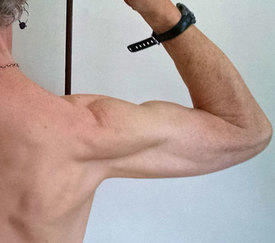Logging Gym Exercises

I go to the gym and do strength training for 45min-1 hour. Couldn’t there just be a general calorie range for strength training instead of typing in each exercise? That’s so manual!
Answers
-
There is. It's in the cardiovascular section of the exercise database, the only part of the database that estimates calorie burn.
For normal reps/sets workouts with short rests between sets, record the whole session time as "Strength training (weight lifting, weight training)".
1 -
As Ann said above.
It's a fools errand to attempt to estimate calories per set done. Just use the estimate provided above for total session time. Yeah, it may not seem that high compared to cardio, but that's normal.
0 -
Didn't mention if you have a wearable device/fitness watch. If so, try that. IME, it clocks elevated heart rate from lifting, resulting in a higher calorie burn reading than the much lower default Strength Training Cardio entry in MFP's database.
1 -
But that supposedly higher calorie burn's not a good thing - hoping that's what you mean?
Lifting doesn't burn a lot of calories. Worth doing for many reasons, but not a high calorie burner during the workout (or from EPOC, in absolute calories vs. percentages).
Heart rate is a poor indicator of work - calorie burning work in the physics sense of work - during lifting.
Overall, heart rate sort of works as a proxy for calorie burn because oxygen consumption correlates pretty well with calorie burn, and heart rate is a proxy for oxygen consumption. But heart rate goes up for reasons other than oxygen consumption: Strain, high emotions, ambient heat, Valsalva effects, and more. When heart rate increases during strength training, it's primarily from things like strain and Valsalva effect, not increased oxygen consumption.
As an aside, heart rate being a proxy - not a direct correlate - of calorie expenditure introduces some other problems, like the obvious difference in heart rate between a very fit person and a very unfit one when they're doing the same activity.
When it comes to strength training, these days some fitness trackers use METS - same general calorie estimation method MFP uses - in their strength training calorie estimates for exactly these reasons.
This is also interesting:
Not a lot of calories, comparatively speaking, and an interesting discussion of the influence of intensity, duration and other variables.
0 -
Just wondering how to correctly log gym routines in MFP app. Would biceps curls be entered as 6x 35lbs if doing one set per arm with dumbells? And would cable flies, 40lbs per side be entered as 80lbs x3 sets? I just want to enter it in the app correctly and not get false expectations.
0 -
I don't use MFP for that. I use the free app FitNotes, and previously my own Google Sheet.
I think it's probably whichever option you prefer. The bonus of entering 80 is you get an accurate total volume number, if you use that for anything. The bonus of entering 40 is it's immediately obvious what to load on each db when you do the exercise. So long as you remember which format you're using.
1
Categories
- All Categories
- 1.4M Health, Wellness and Goals
- 398.1K Introduce Yourself
- 44.7K Getting Started
- 261K Health and Weight Loss
- 176.4K Food and Nutrition
- 47.7K Recipes
- 233K Fitness and Exercise
- 462 Sleep, Mindfulness and Overall Wellness
- 6.5K Goal: Maintaining Weight
- 8.7K Goal: Gaining Weight and Body Building
- 153.5K Motivation and Support
- 8.4K Challenges
- 1.4K Debate Club
- 96.5K Chit-Chat
- 2.6K Fun and Games
- 4.8K MyFitnessPal Information
- 18 News and Announcements
- 21 MyFitnessPal Academy
- 1.5K Feature Suggestions and Ideas
- 3.2K MyFitnessPal Tech Support Questions



